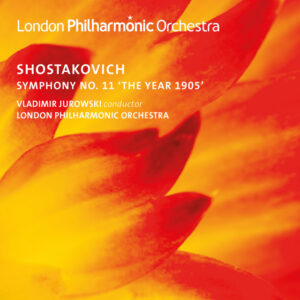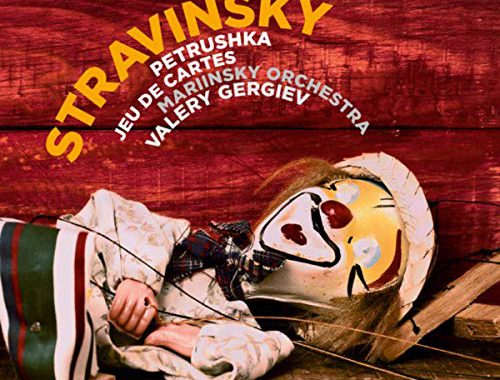GRAMOPHONE Review: Shostakovich Symphony No. 11 ‘The Year 1905’ – London Philharmonic Orchestra/Jurowski
 Hard on the heels of the thrilling John Storgards/ BBC Philharmonic account on Chandos comes another performance I was lucky enough to experience live in December of last year. And a marked distinction in approach is immediately apparent, both in terms of the sound picture and the musical realisation. If we are talking in pictorial terms it’s a case of Storgards’ panning shot versus Jurowski’s more detailed close up. The LPO Live engineering is more immediate, the Chandos more self-evidently wide-screen. The snow-covered Winter Palace Square may be eerily still but Jurowski moves the music forward, less concerned about the purely pictorial and more focused on the musical. The uneasy timpani ostinato is key here and the first of the revolutionary songs – the thematic fabric of this score – declare their identity.
Hard on the heels of the thrilling John Storgards/ BBC Philharmonic account on Chandos comes another performance I was lucky enough to experience live in December of last year. And a marked distinction in approach is immediately apparent, both in terms of the sound picture and the musical realisation. If we are talking in pictorial terms it’s a case of Storgards’ panning shot versus Jurowski’s more detailed close up. The LPO Live engineering is more immediate, the Chandos more self-evidently wide-screen. The snow-covered Winter Palace Square may be eerily still but Jurowski moves the music forward, less concerned about the purely pictorial and more focused on the musical. The uneasy timpani ostinato is key here and the first of the revolutionary songs – the thematic fabric of this score – declare their identity.
Jurowski recalls those songs as only a Russian could; their melancholy is personal. He is plainly set on dismissing once and for all the notion held by some that this marvellous piece is little more than glorified movie music. Those naysayers have never glimpsed its soul, the subtext of its history. And despite, or even because, of all its graphic imagery Jurowski and the recent Storgards make us deeply aware of that subtext in very particular ways.
There is urgency and heat in Jurowski’s reading and come the Bloody Sunday massacre which is at the fulcrum of the piece he seems to accentuate that it is music’s most methodical and rigorous form – the fugue – which Shostakovich uses to drive us towards systematic slaughter. The thunderous assault of the solo percussion is brutally immediate. But again it is typical of Jurowski that the ‘white-out’ to icy silence in its wake is as shocking as the assault itself. It takes a second or two to register that there is sound at all.
The slow movement ‘In Memoriam’ is a wonderful example of Shostakovich saying so much with so little on the page and Jurowski respects and inhabits its air of communal mourning right up to the major key modulation in the violins late in the movement which conveys more hope than a thousand words could. But the mourning will persist and the obliterating crash of the tam-tam in the finale gives way to perhaps the single most heartbreaking moment of lamentation in all Shostakovich – the great cor anglais solo. Characteristically Jurowski gives his player leave to make this the heart and soul of this piece – but he also pulls focus on the serpentine bass clarinet solo which so rudely interrupts it to signal unease, unrest, resistance.
The all-important church bells of the coda are again (as with Storgards) borrowed from the Royal Liverpool Philharmonic who commissioned them – and thrilling they are. But unlike Storgards – and I think preferable – Jurowski goes for an abrupt cut-off at the close rather than a prolonged resonance (which applause is likely to violate anyway). For me it is the abruptness that tells us unequivocally that history will repeat itself. I wouldn’t want to choose between these two highly distinctive performances – but sonically speaking there’s no question that Chandos wins the day.
You May Also Like

GRAMOPHONE: From Where I Sit – May 2021
19/05/2021
Edward Seckerson meets JAMIE PARKER
17/05/2023

